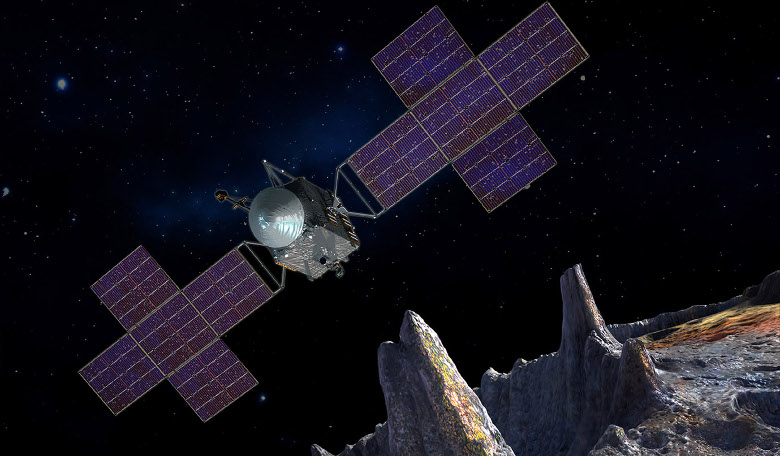NASA's up and coming Psyche mission to explore a unique metal asteroid orbiting the Sun between Mars and Jupiter, will also test new communication hardware that uses lasers instead of radio waves.
The asteroid Psyche has been specifically targeted because it appears to be the exposed nickel-iron core of an early planet, one of the building blocks of our solar system. Studies of the asteroid could therefore help astronomers understand an aspect of planet formation that is relatively unexplored: iron cores.
To help relay data about Psyche, the spacecraft will be equipped with the Deep Space Optical Communications (DSOC) package. This hardware uses photons – particles that make up light – to transmit data and it is hoped that the method will increase efficiency and performance by 10 to 100 times over conventional means.
"Things are shaping up reasonably and we have a considerable amount of test activity going on," says Abhijit Biswas, DSOC Project Technologist in Flight Communications Systems at JPL. Delivery of DSOC for integration within the Psyche mission is expected in 2021 with the spacecraft launch to occur in the summer of 2022, he explains.
"Think of the DSOC flight laser transceiver onboard Psyche as a telescope," Biswas explains, able to receive and transmit laser light in precisely timed photon bursts.
The DSOC is being hailed as a ‘game-changing’ technology and its development phase was funded by NASA’s STMD's Game Changing Development Program. STMD stands for Space Technology Mission Directorate and laser communication is expected to revolutionise future space endeavours.
It is anticipated that DSOC will start operating perhaps 60 days after Psyche launches and it works by transmitting a laser beacon from Earth to assist lineofsight stabilisation so that the downlink laser beam knows where to transmit back to. For the Psyche mission, the laser beacon to DSOC will be sent from JPL's Table Mountain Facility in the Angeles National Forest, while the returning beam data from space will be received at a large aperture ground telescope at Palomar Mountain Observatory in California, near San Diego.
"Having our robotic mission test technology that we hope will help us eventually communicate with people in deep space is excellent integration of NASA missions and all of our goals," said Lindy Elkins-Tanton, Director of the School of Earth and Space Exploration at Arizona State University in Tempe and principal investigator for the Psyche mission.
One day the technology could be used to establish a capable telecommunications infrastructure for future missions to Mars. "Laser communications will augment that capability tremendously. The ability to send back from Mars to Earth lots of information, including the streaming of high definition imagery, is going to be very enabling,” added Biswas











